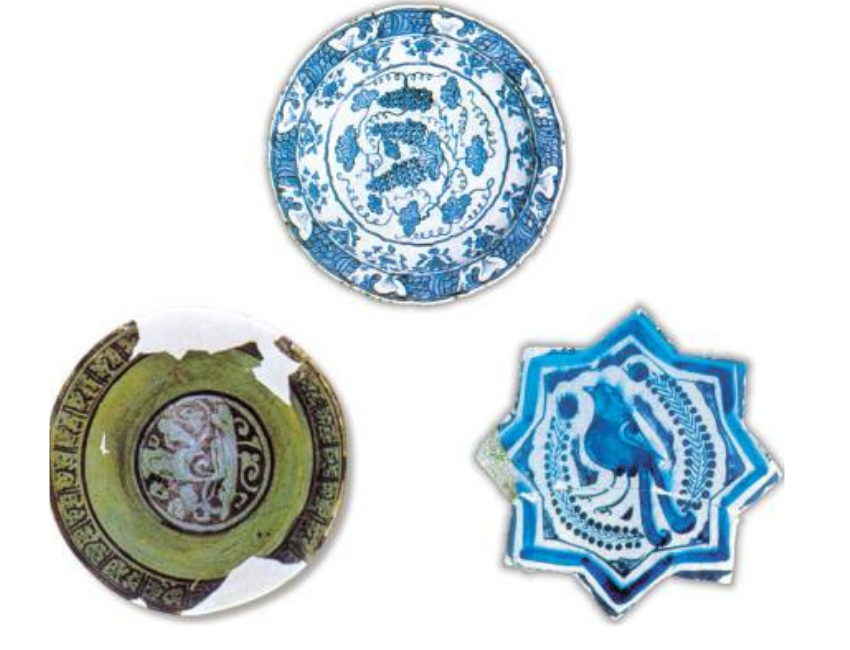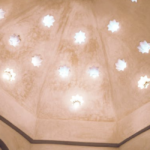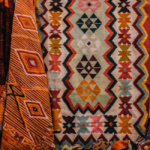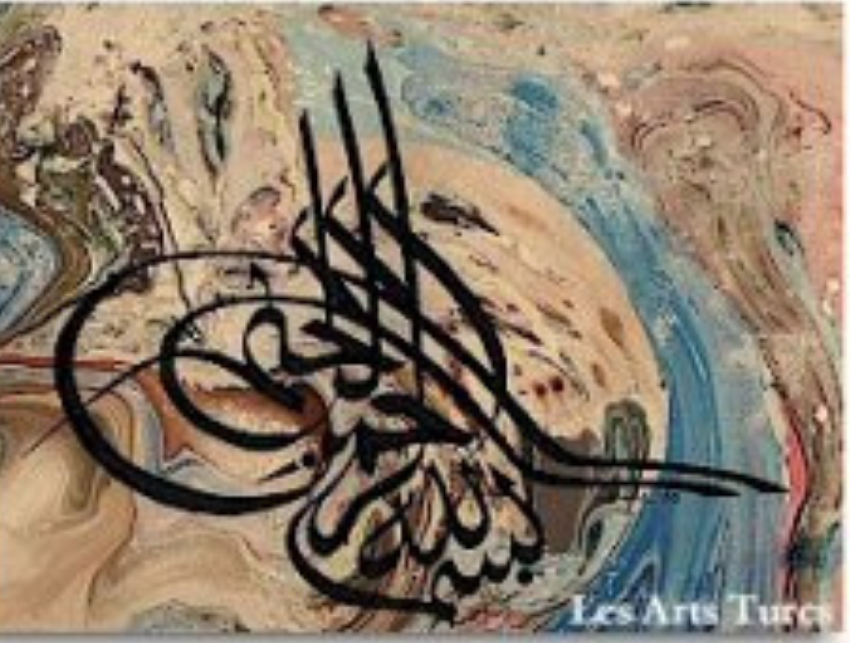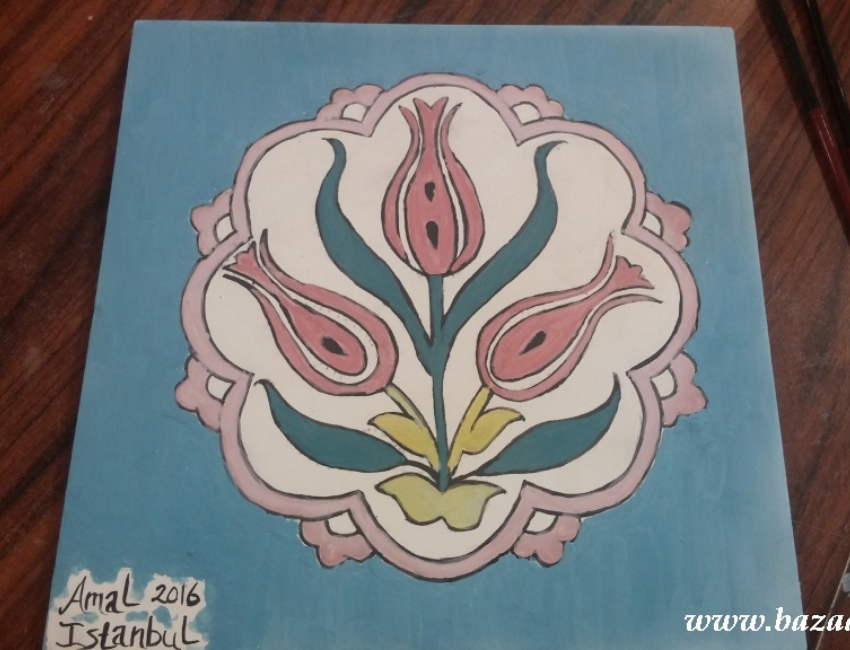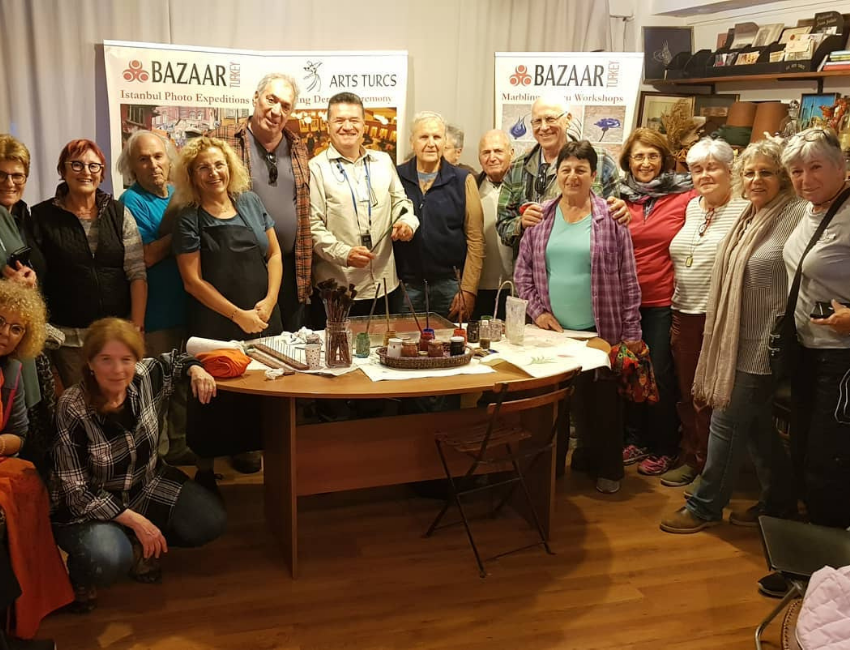Simple dishes, pots, bowls and oil lanterns with turquoise, green, violet and yellow-brown glazes are seen in considerable number. They are usually made of reddish or off-white clay with a coarse grain. The glaze is rather thick.
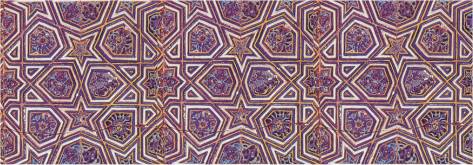
Following the defeat of the Byzantine army in 1071 by the Anatolian Seljuk Turks, a rapid increase of Turkish influence was witnessed in Anatolia, which led to the creation of countless works of art. The consolidation of the Seljuk State was interrupted by Mongol invasions in the middle of the 13th century but the arrival of Turkish tribes from Turkestan, Azerbaijan and Khorasan led to a revival of Turkish tradition and culture in Anatolia and to a new period of research in art and culture.
In the 15th century, the various Anatolian fiefdoms, the so-called emirates, were united under the Ottomans and a definite Ottoman style began to appear with the conquest of Istanbul in 1453. Parallel to the transformation of the Ottoman State into a mighty empire, encompassing a major part of the World of Islam, the arts flourished. A great quantity of works of the highest quality continued to be produced in the distinctive Ottoman style in the following century, reflecting the glory and grandeur of Turkish Islamic art.
In the 18th century, political instability and the movement towards westernization brought about a marked degeneration in several branches of art. The so-called ‘Tulip Period’ (1703-1730) was a final attempt to revive Ottoman art while the 19th century reflected a rapid and final decline.
Anatolian Turkish architecture and the minor arts, when considered in the context of Islamic art, are extremely innovative. Examples of tiles and pottery are among the finest works of the period. Seljuk tiles and pottery developed mainly in the 13th century. It was , however, during the Ottoman era, beginning in the 14th century, that ceramic tiles and pottery of the highest quality and greatest variety were produced, reflecting the glory and refinement of Turkish Islamic civilization in the growing empire. Turkish tiles and pottery from the 14th to 19th centuries have won worldwide acclaim due to their wide range of techniques, colour schemes and designs.
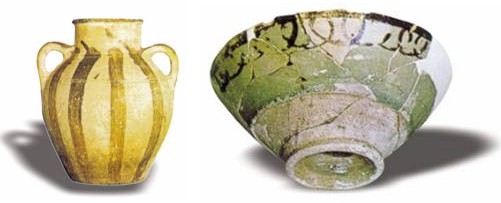
Seljuk Ceramics
Although tiles are very common in Seljuk architecture, ceramic ware was much less common in that period. Finds in recent years have shed light on this subject which include the extensive discoveries of ceramic fragments found during excavations carried out at Kubadabad, Kalehisar near Alacahöyük, Ahlat, Eskikahta, Adiyaman (Samsat), Korucutepe near Elaziğ and in the Keban and Atatürk dam areas in southeast Anatolia. In these excavations, a large number of vases, ewers, bowls,plates,decanters and similar artifacts in unglazed, reddish, greyish and yellowish soft clay were discovered. Some were painted with grey or reddish stripes and had grooves and embossed crenated strips. Large, unglazed, earthenware jars, decorated with figures are on display at museums in Diyarbakir, Mardin, Adiyaman and in the Museum of Turkish and Islamic Art in Istanbul. These objects are decorated using the barbotine technique with rosette, animal and foliate motifs.
Simple dishes, pots, bowls and oil lanterns with turquoise, green, violet and yellow-brown glazes are seen in considerable number. They are usually made of reddish or off-white clay with a coarse grain. The glaze is rather thick.
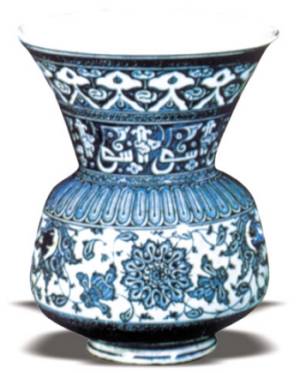
The most common form of ceramics found during excavations in Anatolia are those made using the “sgraffiato” technique, a technique known in Islamic art from the 9th century onwards and widespread in local Christian art. Sgraffiato is an engraving technique, in which the design is incised onto the clay, or through a slip into the clay surface before firing. After covering with a monochrome cream, yellow-brown, green or a polychrome transparent glaze, the object is re-fired. The clay is either brick-red, grey or a light tan.
Designs produced using this technique include abstract foliate and geometric motifs and animal and human figures. A rarer group of Seljuk pottery is made using the champlevé technique in which the design is formed by engraving the slip with a wide tool to form deep, wide grooves. The depressions are usually painted in dark brown or black. The transparent glaze is colourless, green, brown or polychrome. It is apparent that Anatolian Seljuk sgraffiato and champlevé pottery with figural decoration display characteristics which conform to the iconography seen on medieval Islamic ceramics. The slender and elongated facial features of the figures differ from those encountered in works of Islamic art from Iran, Syria and Iraq where round faces and almond eyes are dominant characteristics. Another noteworthy aspect is the comparatively simple iconography.
Luster pottery is mainly found in southeast and east Anatolia (Samsat and Ahlat). In Samsat, there are four main types of luster ceramics. In the first group, the luster decoration is on greenish transparent glazes, in different shades of brown, made with metallic oxides. The designs are coarsely drawn. Stylized plant motifs, rings along bordures and kufic inscriptions adorn the ceramics. The clay is off-white and coarse. These objects consist mostly of bowls.
The second group of lusters have cobalt blue lines and dots drawn on transparent glazes. Brown luster decorations are applied on top in a similar way. This group comprises mostly deep plates with broad rims and small pots.
The third group of lusters have purple glazes. Their decoration and shape of bowl is similar to the first group. In the fourth group of lusters a transparent cobalt blue glaze is applied. They are found in much fewer numbers and only as small fragments.
The few luster ceramics found in the Ahlat excavations most probably are from Iran, since they were executed using a technique peculiar to that region. The discovery, however, of another group of lusterware and kilns prove that these types of ceramics were produced in Ahlat.
It is assumed that pottery with black graphic designs having a transparent turquoise glaze produced in great quantity in Syria, mainly in Raqqa, during the 13th century, was also being made in Anatolia. Some of these objects are decorated in black, blue and brown and have colorless transparent glazes. In all cases, the clay is off-white and has a coarse grain. A great variety of shapes are used. The surface of the ceramics is decorated with abstract leaves and flower motifs inside geometrical frames. Stylized bordures consisting of kufic writing are also common. They date from the end of the 12th century or the first half of the 13th century.
Ceramic `slip’ ware constitutes one of the smallest groups of pottery finds in Seljuk Anatolia. Fragments of different color have been encountered. Turkish-Islamic archaeology was only given the importance it deserves during the past decade or so. Unfortunately, the Islamic levels have been largely ignored in archaeological excavations of earlier civilizations. The study of new material from excavations will undoubtedly shed further light on Anatolian Seljuk ceramics.
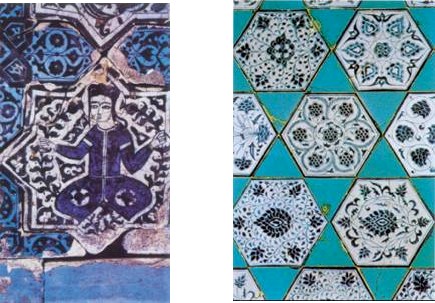
Seljuk Tiles
The first major development in the art of Islamic tile-making occurred primarily in Anatolian Seljuk architecture. Mosques, mescits (small mosques) and minarets, were decorated with turquoise and purple and reddish glazed brick to produce a variety of geometric compositions and kufic inscriptions. Small mosaic-like pieces of tile were also combined to create certain designs. The tendency towards complexity in decoration in the second half of the 13th century is paralleled with the occurrence of twin minarets.
Examples of tiled and glazed brick minarets are the Taş Medrese (Aksehir, 1250), Yivli Minare (Antalya, late 13th century), Sahipata Mosque (Konya, 1258), the Gök Medrese and Çifte Minareli Medrese (Sivas, 1272), and the İnce Minareli Medrese (Konya, 1264).
Glazed brick and tile-work, similar to the decoration found on minarets, is seen on the exteriors of tombs and in the interiors of Seljuk buildings, on brick revetments covering large surfaces, on arches, vaults, walls and on other architectural elements. Such decoration can be seen on the İzzeddin Keykavus tomb in Sivas (1219-20), on the Sırçalı Medrese in Konya (1242-43), and on the Malatya Ulu Mosque (1247).
The interior walls of Seljuk buildings were often faced with turquoise tiles but also with purple, black and cobalt blue tiles, however more sparingly. The revetment was constructed out of square, hexagonal or triangular units. Very rarely was faience tiling decorated with overglazed gilt designs. The faience with relief tiling was generally used for inscriptions, white thuluth writing in relief was used on a dark blue background as seen on the cenotaph of Kılıç Arslan II in Konya.
Tile mosaic decoration became highly developed in Anatolia during the Seljuk period. It is a complex and visually diversified technique, generally applied to such interior surfaces as domes, squinches, arches, panels and mihrabs. Tiles in turquoise, and less frequently in purple, cobalt blue and black glazes were cut to the required shape to form a decorative composition. The cut pieces were placed, according to a design, in a mosaic-like pattern. The reverse side was then covered in plaster, which left the glazed mosaic embedded in a panel. The panel could then be affixed to the wall as a revetment. Tile mosaic is a highly versatile technique, used to produce closely interwoven designs on both flat and curved surfaces, or on angular and curved scriptural and foliate friezes. Tile mosaic mihrabs were an innovation of the Anatolian Seljuks. In early examples, simpler and more geometric designs were common. Some important mihrabs with tile mosaic decoration include those in the Alaeddin Mosque, (1220) the Sahipata Mosque (1258) and the Sırçalı Mescit (13th century), Konya. The tile mosaic decorations on the domes of the Karatay Medrese (Konya, 1251), the Gök Medrese Mescit (Sivas, 1271) and Taş Medrese (Çay, 1278) present highly artistic compositions.
As a result of excavations,Seljuk palaces, which were in ruins, were discovered and it has been ascertained that tiles were used to decorate these structures. Palace tile work differs from that seen in religious architecture. It was generally stellate and cruciform, with a figural composition. Tiles with underglazes were found in all Seljuk palaces, and luster tiles were encountered in the Kubadabad (Beyşehir) and Alaeddin Palaces (Konya).
The famous ‘minai’ or enamel glazing technique of the Great Seljuks of Iran was only discovered in the Alaeddin Palace in Konya and were produced during the reign of Kılıç Arslan II (1156-92). However, the richest and most interesting tiles from Seljuk palaces were found in the Kubadabad palace along the Beyşehir lakeside. The palace was built during the reign of Sultan Alaeddin Keykubad (circa 1236). These tiles are now on display in the Karatay Medrese Museum, Konya. Kubadabad tiles consist of panels of figural tiles connected by cruciform tiles decorated with arabesques. These figural tiles are decorated with depictions of the sultan, women of the harem, courtiers and servants. However, the most interesting figures are the hunting and imaginery animals, such as the sphinx, siren, single and double-headed eagles, single and paired peacocks, paired birds on the tree of life and a dragon which create an unreal world. They constitute symbolic representations of the rich figural world of the Seljuks. Hunting animals, such as the fox, hare, wolf, mountain goat, wild ass, bear, lion, falcon, hawk and antelope are pictured in widely varying and highly artistic compositions. Designs in purple, turqouise, black, blue and green were painted on a white ground on stellate underglazed tiles, while on the cruciform tiles, black arabesque designs were painted under a transparent turquoise glaze.
Tiles similar to the Kubadabad examples were also discovered in palaces in Antalya, Aspendos, Alanya, Kayseri and Akşehir. Except for a few variations arising from differences in date, the style of Seljuk tiles is remarkably uniform. Thus, it would appear that tile types and styles were determined at one or two main centers. Konya was the most important center of tile manufacture in Anatolia and here we find the finest examples of all kinds of Seljuk tiles.
-
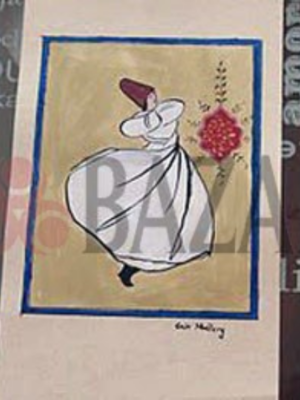 Turkish Miniature & Watercolor Painting Lesson75,00 €
Turkish Miniature & Watercolor Painting Lesson75,00 € -
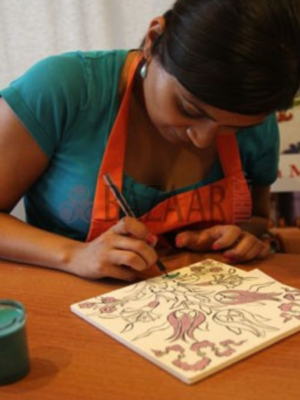 Turkish Tile Ceramic Painting Lesson In Istanbul75,00 €
Turkish Tile Ceramic Painting Lesson In Istanbul75,00 € -
Product on sale
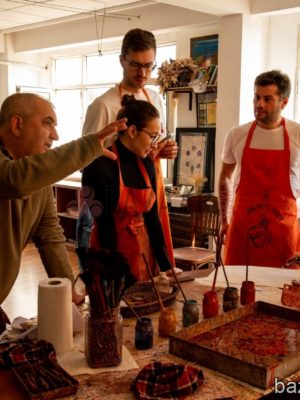 Turkish Marbling Ebru Lesson in istanbulOriginal price was: 75,00 €.55,00 €Current price is: 55,00 €.
Turkish Marbling Ebru Lesson in istanbulOriginal price was: 75,00 €.55,00 €Current price is: 55,00 €.

